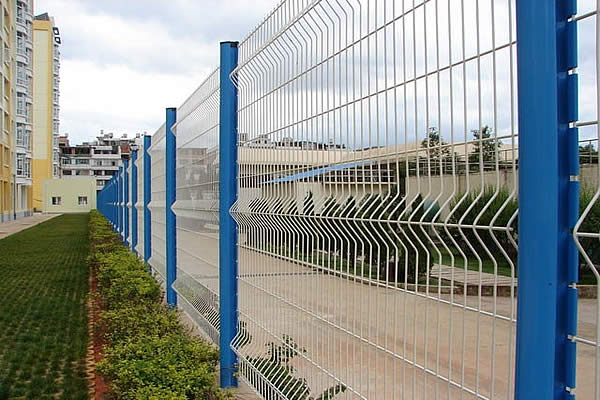 TEL:
+86-13102802206
TEL:
+86-13102802206
 Email:
fencenetting@china.com
Email:
fencenetting@china.com
 Language
Language
 TEL:
+86-13102802206
TEL:
+86-13102802206
 Email:
fencenetting@china.com
Email:
fencenetting@china.com
 Language
Language


Screen Netting for Windows Enhancing Comfort and Protection
When it comes to creating a comfortable living space, ensuring proper ventilation while keeping the elements and pests at bay is crucial. One effective solution that has gained popularity in recent years is screen netting for windows. This innovative product not only allows for fresh air to flow into your home but also serves as a protective barrier against unwanted intruders, including insects and debris. In this article, we will explore the benefits of screen netting for windows, types of screen materials, installation tips, and maintenance to help you make an informed decision.
Benefits of Screen Netting
The primary advantage of installing screen netting on your windows is the ability to enjoy fresh air without compromising your comfort and safety. Here are some key benefits
1. Insect Protection Screen netting acts as a physical barrier that prevents bugs, flies, and other pests from entering your home. This is particularly beneficial during warmer months when insects are most active.
2. Enhanced Airflow With screen netting, you can keep your windows open for ventilation without worrying about dirt, leaves, or other debris getting inside. This helps maintain a fresh and clean indoor environment.
3. UV Protection Some screen materials can filter harmful UV rays from the sun, helping to protect your furniture and flooring from fading over time. This added layer of protection can extend the life of your home's interior.
4. Privacy Depending on the type of screen netting you choose, you can also enhance your privacy. Certain materials can obscure the view into your home without completely blocking natural light.
5. Aesthetic Appeal Modern screen netting comes in various colors and designs, allowing you to choose options that complement your home's architecture and decor. This adds an element of style while serving a functional purpose.
Types of Screen Materials
When selecting screen netting for your windows, it is essential to consider the different types of materials available
. Each type comes with its unique features and benefits1. Fiberglass Screens Fiberglass is one of the most common materials used for window screens. It is lightweight, durable, and resistant to rust and corrosion. Fiberglass screens are also easy to install and maintain, making them a popular choice among homeowners.
2. Aluminum Screens For those seeking a more robust option, aluminum screens are an excellent choice. While they may be slightly heavier than fiberglass, they offer greater durability and are less prone to tearing. Aluminum screens are ideal for high-traffic areas.

3. Solar Screens These specialty screens are designed to block a significant percentage of UV rays while still allowing airflow. Solar screens are perfect for homes in sunny climates and can help reduce cooling costs by keeping the indoor temperature more stable.
4. Pet Screens If you have pets, investing in pet-resistant screen netting is wise. Made from stronger materials, these screens withstand scratching and pushing, ensuring that your furry friends can enjoy the open window without causing damage.
5. Retractable Screens For those who prefer a more versatile option, retractable screens can be a fantastic solution. These screens roll up when not in use, preserving the unobstructed view from your window and allowing you to easily switch between openness and protection.
Installation Tips
Installing screen netting for windows can be a straightforward DIY project or a task for professional installers. Here are some essential installation tips
- Measure Accurately Begin by measuring the window frame to ensure you purchase the right size screen. It’s best to measure both the height and width and remember to account for any overlaps.
- Gather Tools and Materials Depending on the type of screen you choose, you will need tools like scissors, staples, or screws. Ensure you have everything ready before starting the installation.
- Follow Instructions Each type of screen may have specific installation guidelines. Follow the manufacturer’s instructions closely for the best results.
- Secure Properly Ensure the screen is securely fastened in place to avoid any gaps that could allow pests to enter. Double-check the screen's tension to prevent sagging.
Maintenance of Screen Netting
Maintaining your screen netting is crucial for its longevity and effectiveness. Regularly inspect for tears, holes, or signs of wear and replace damaged sections promptly. Cleaning is also essential; simply remove the screens and wash them with soapy water and a soft brush to remove dust and debris. Allow them to dry completely before re-installing.
Conclusion
Screen netting for windows is a practical and beneficial addition to any home. With various materials available, it’s easy to find the perfect option to enhance airflow, provide protection from pests, and add aesthetic appeal. By understanding the benefits, types, installation tips, and maintenance procedures, homeowners can enjoy a comfortable and secure living environment all year round. Embrace the beauty of fresh air without the nuisance of intruders—install screen netting today!